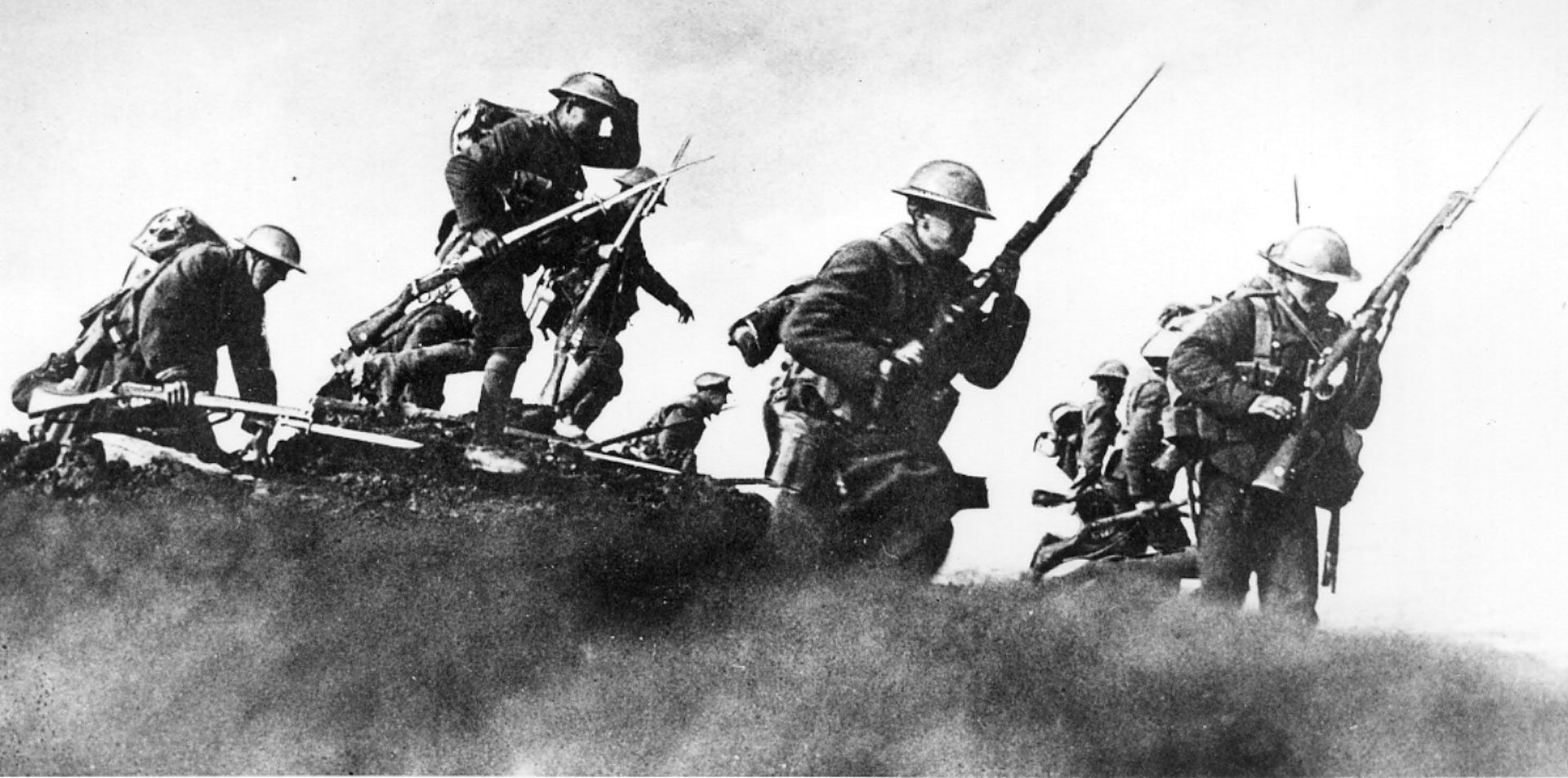How lessons from the First World War could help Ukraine in the war
Published: 10 March 2024
By John Long Burnham
via The Conversation website

WWI attack
Soldiers climb out of trenches in this First World War photo. The successes of the 100 Days Offensive in 1918 were influenced by the Allies’ reliance on a strategy of maximum effort, flexible campaigns and advances in tactics.
As Russia’s invasion of Ukraine enters its third year, the war’s tactics increasingly seem to match scenes from the First World War: soldiers huddle in trenches along stagnant front lines and navigate intense barrages.
Beyond trench warfare, however, the Ukraine conflict resembles the strategic, operational and tactical situation faced by Allied commanders immediately prior to the 100 Days Offensive, and its lessons remain applicable to contemporary wartime political and military leaders.
The successes produced by the 100 Days Offensive that began in the late summer of 1918 were primarily influenced by the Allies’ reliance on a strategy of maximum effort, flexible campaigns and advances in tactics.
The 100 Days Offensive
Having suffered significant losses in the preceding months, and facing the possibility of growing German strength following the defeat of Russia, Allied leaders prioritized launching a decisive offensive before their own exhaustion forced them to settle for peace.
These strategic considerations led Allied commanders to shift the balance of their forces to seize opportunities along the front. Beginning with a surprise attack on Amiens, the Allies often rapidly shifted the centre of their offensive efforts. These moves forced the German High Command to commit additional resources along the front, weakening its defences.
While the Allies’ hurried tempo led to higher casualties, maintaining momentum was critical to eventually piercing the Hindenburg Line, the Germans’ most significant prepared defensive position.

In this undated photo, United States Army troops stand in the trenches in France during the First World War. (AP Photo)
Allied tactics forced combat into the open. While aircraft had been introduced prior to 1918, the Allies were able to rely on near-total control of the air. This allowed Allied forces to more effectively target their artillery fire and rely on better reconnaissance.
Moreover, the Allies were also able to introduce significant numbers of tanks to the battlefield. This development allowed Allied forces to gain localized fire support at key stages of the offensive and contributed to their string of victories.
Wartime challenges
The legacy of the 100 Days Offensive offers several strategic, operational and tactical lessons that remain highly applicable to the Ukrainian War. These include the importance of political timelines, the role of mobility in combat and the necessity of air power and infantry innovation.
Having dedicated a significant portion of its economy to war production, Russia will become more capable of replacing its wartime losses. This shift has occurred just as the United States and Europe have struggled to fulfill orders for ammunition and other equipment for Ukraine due to domestic political complications.
Read the entire article on The Conversation website.
External Web Site Notice: This page contains information directly presented from an external source. The terms and conditions of this page may not be the same as those of this website. Click here to read the full disclaimer notice for external web sites. Thank you.



